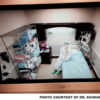![1]()
Opinion
A Practice Resolution
December 2, 2014
In the heart of the holiday season’s gluttony (and the challenges of staffing the holidays), we need something to get us excited for 2015.
![1]()
News
Ebola Spurs Better Infection Prevention Practices for U.S.-based Hospitalists
December 2, 2014
Much has been written, spoken, declared, retracted, and learned about a tiny little RNA virus by the name of Ebola. This encapsulated virus has been as disruptive to the psychology and operations of U.S. hospitals as it has been to the physiology of those infected.
News
Cut Costs, Improve Quality and Patient Experience
December 2, 2014
“Now that’s a fire!” —Eddie Murphy This is the final column in my five-part series tracing the history of the hospitalist movement and the factors that propelled it into becoming the fastest growing medical specialty in history and the mainstay of American medicine that it has become. In the
![1]()
News
Early Warning System Boosts Sepsis Detection, Care
November 19, 2014
An alert system that monitors inpatients at risk of developing sepsis can prompt early sepsis care, can speed patient transfers to the ICU, and may even reduce mortality risk from sepsis. A recent study published in the Journal of Hospital Medicine reports on an early warning and response system
News
Hospitalist Adds County Coroner to His Résumé
November 19, 2014
Hospitalists have taken positions in every corner of healthcare: the C-suite, hospital administration, and even nominee for U.S. surgeon general. [caption id="attachment_7133" align="alignright" width="175"] Dr.
![1]()
Audio
LISTEN NOW: Emergency Medicine and Hospitalist Collaboration
November 13, 2014
This month's podcast features Dr. Ken Epstein, chief medical officer for Hospitalist Consultants, a division of ECI Healthcare Partners; and Dr.
News
New-Onset Perioperative Atrial Fibrillation Associated With Increased Risk of Ischemic Stroke
November 10, 2014
Clinical question For patients undergoing any inpatient surgery, is the presence of new-onset perioperative atrial fibrillation associated with a greater long-term risk of ischemic stroke? Bottom line Perioperative atrial fibrillation (AF) is associated with an increased risk of ischemic stroke
News
Colchicine Prevents Postpericardiotomy Syndrome Following Cardiac Surgery
November 10, 2014
Clinical question Does perioperative colchicine reduce postpericardiotomy syndrome following cardiac surgery? Bottom line The use of colchicine in the perioperative period decreases the incidence of postpericardiotomy syndrome after cardiac surgery with a number needed to treat (NNT) of 10.
Video
Hospitalists Channel Osler, Pioneer in Bedside Exams
November 10, 2014
Hands-on workshop helps hospitalists gain confidence in fundamentals, learn to teach physical exam skills better
Video
Checklists Improve Outcomes, Require Care-team Buy-in
November 10, 2014
Dr. Ramiro Jervis and Dr. Umesh Gidwani urge hospitalists to experiment with checklists during the 7th annual Hospital Medicine Symposium in New York City.


